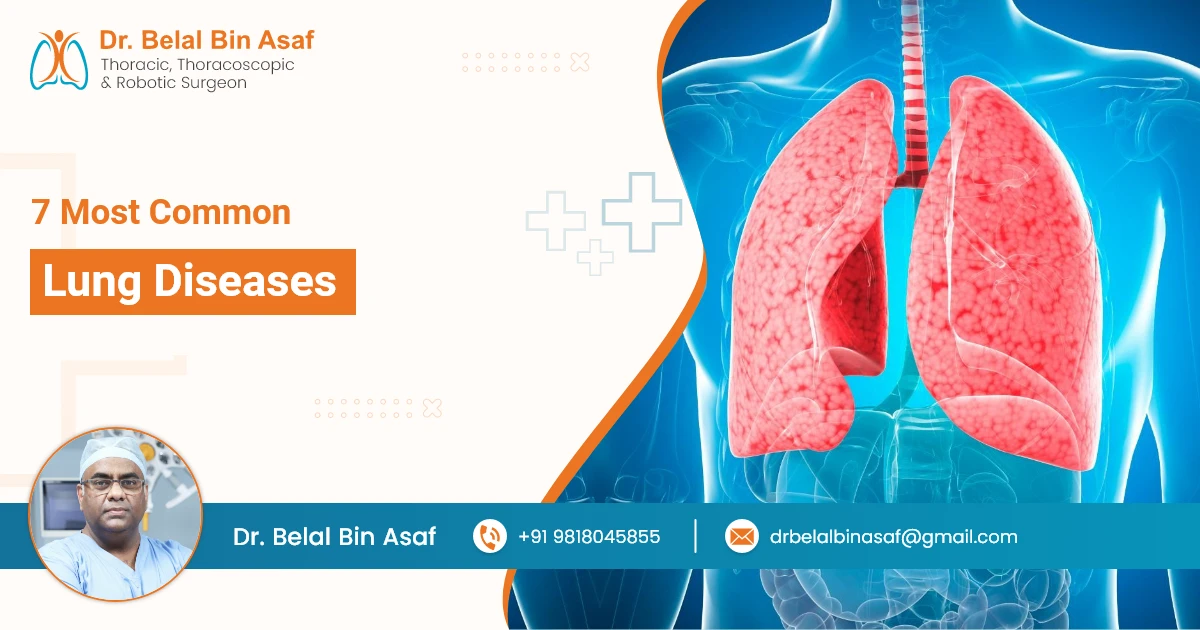Lungs play an essential role in keeping us alive by enabling oxygen to flow through our body and removing carbon dioxide. However, they are susceptible to numerous diseases that can affect their ability to function efficiently. According to the World Health Organization (WHO), respiratory diseases are among the leading causes of illness and death worldwide. Knowing the common lung diseases can help us recognize early symptoms, seek treatment, and take preventive measures.
In this blog, we’ll explore seven of the most common lung diseases, their causes, symptoms, and ways to manage or prevent them.
Contents
1. Chronic Obstructive Pulmonary Disease (COPD)
Overview: COPD is a progressive disease that obstructs airflow in the lungs. It is commonly associated with smoking, but exposure to air pollution and occupational irritants can also be contributing factors. COPD includes chronic bronchitis and emphysema.
Symptoms:
- Persistent cough with mucus
- Shortness of breath
- Wheezing
- Chest tightness
- Fatigue
Causes:
- Long-term smoking
- Air pollution
- Exposure to dust or chemicals at work
- Genetic predisposition (e.g., Alpha-1 antitrypsin deficiency)
Management:
- Quit smoking
- Use prescribed bronchodilators or inhalers
- Pulmonary rehabilitation
- Oxygen therapy in severe cases
2. Asthma
Overview: Asthma is a chronic inflammatory condition that narrows the airways, making it difficult to breathe. It can affect individuals of all ages, though it often starts in childhood. Asthma triggers include allergens, cold air, exercise, and respiratory infections.














 +91-9818045855
+91-9818045855
